Holmstrup Arborvitae | One Of My Favorite Plants
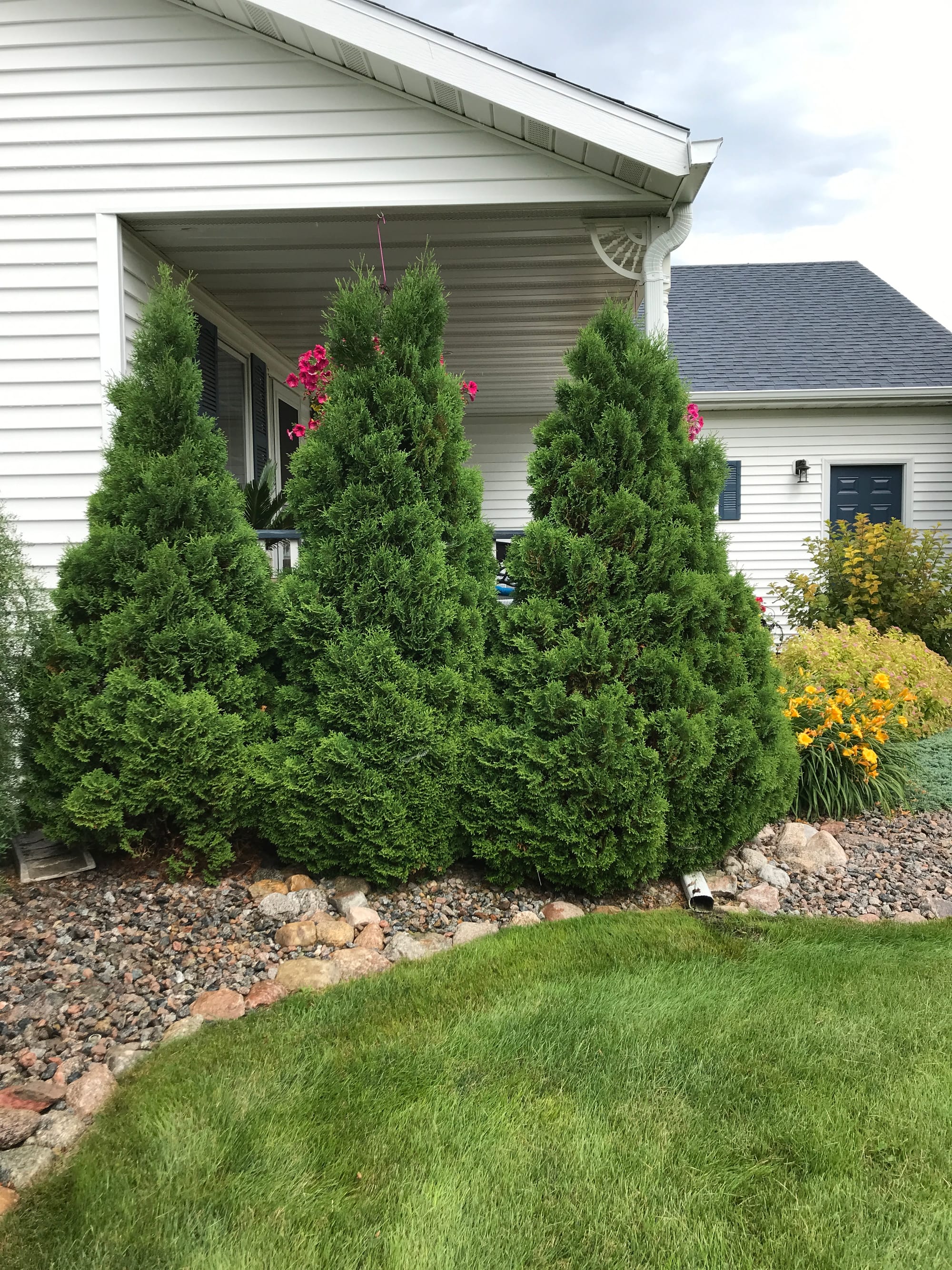
Who am I kidding? If it's a tree or shrub, it's one of my favorites 😊.
Holmstrup Arborvitae, Thuja occidentalis ‘Holmstrup’, Zone 3-8
I love Arborvitaes, and the Holmstrup variety is one of the best. You'll also see it referred to as Holmstrup Eastern Arborvitae. It's an excellent compact selection with a narrow conical habit and rich green foliage.
At maturity, the Holmstrup will reach 8-10 feet tall by 3-4 feet wide.
Arborvitaes thrive in full sun but will tolerate some shade and do well. They are adaptable to various soils but prefer ample moisture and good drainage.
It's common to see upright evergreens like Arborvitaes and Junipers planted at the corners of homes or along their tall walls. When planted too close, they'll eventually reach the roof line. Waiting too long to prune plants that have reached a roof line can drastically jeopardize their natural form when removing too much growth, leading to less-than-desired looks, at least for my taste.
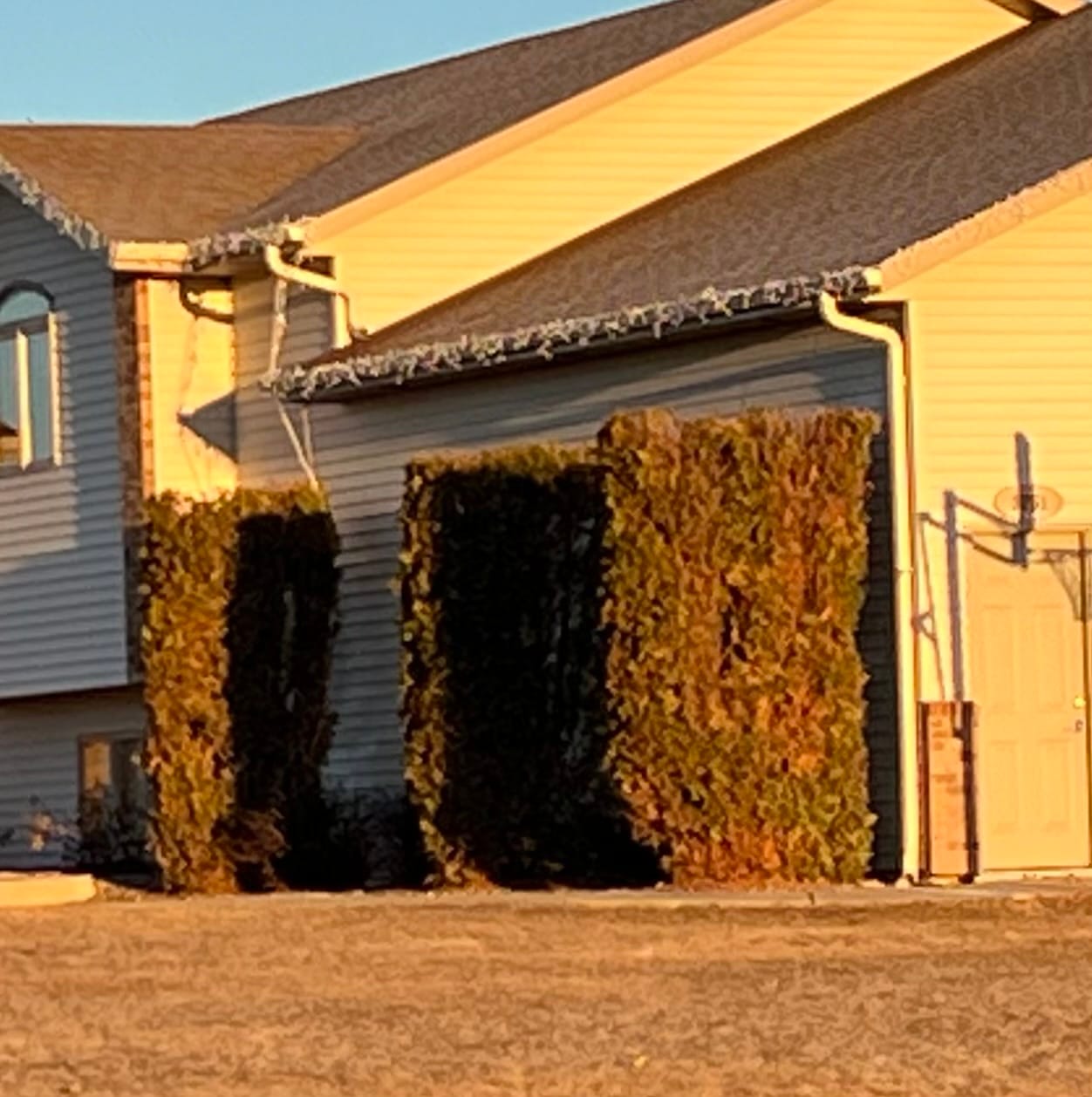
And this guy likes to prune! Yikes!
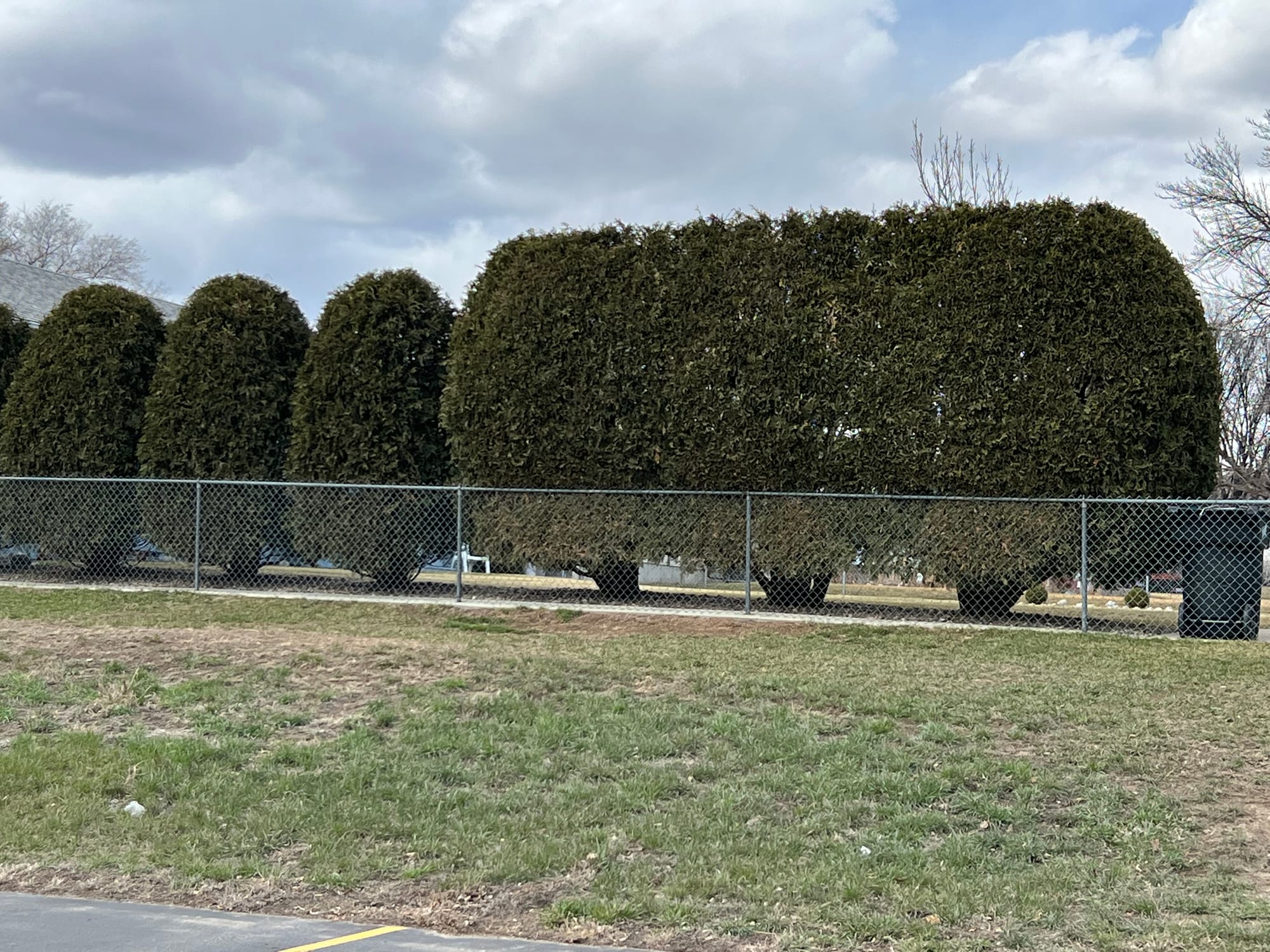
When we first plant them, plants seem small, but it doesn't take long before pruning is involved.
This video looks at pruning back three Holmstrup Arborvitaes before it's too late.
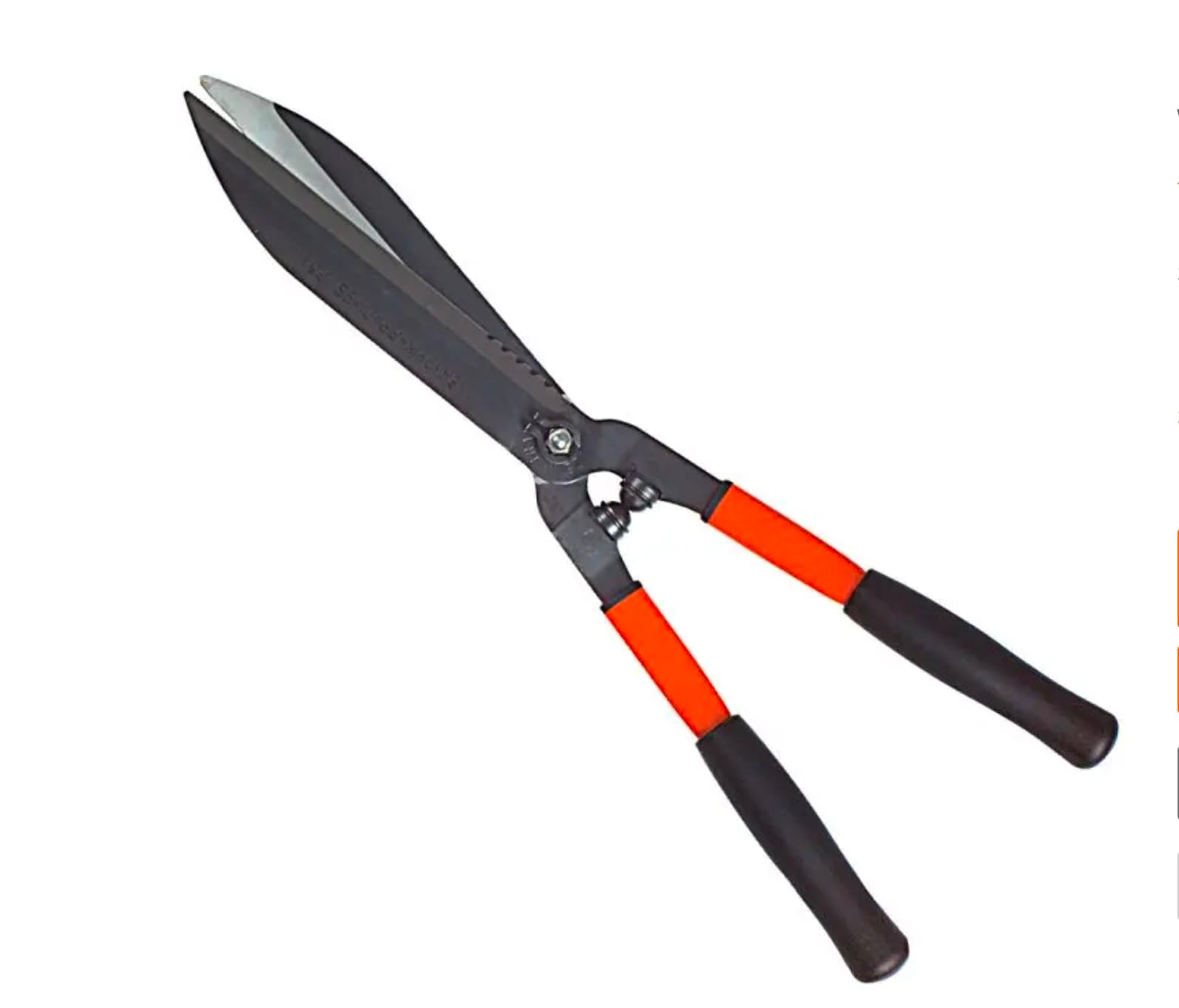
Bahco Hedge Shears - 23IN With 9-1/2IN Blade
Lightweight and durable. The last hedge shears you'll ever need.
Garden Hike is supported by its audience. When you purchase through links on this site, we may earn a small commission at no additional charge to you.
Here’s a before and after photo of the pruning covered in the video.
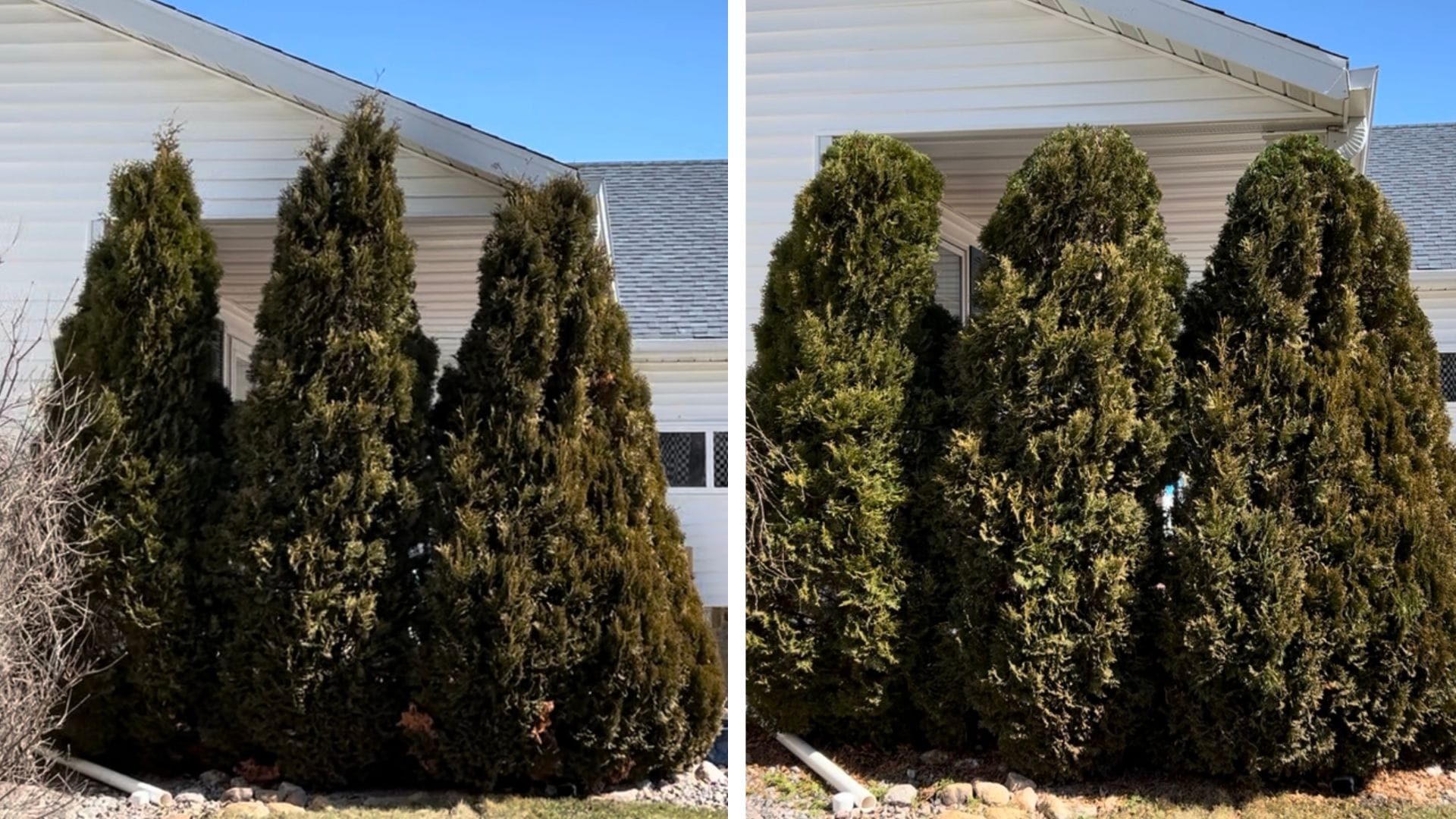
I'll need to start shearing these Holmstrups at least every other year to keep them in the shape shown on the right.
This photo shows the three Holmstrups from our front porch when they were younger. This size would have been the height to start shearing them annually if we wanted to keep them small and avoid having them grow together. Since I was after a dense screen, I planted them closer together than recommended.
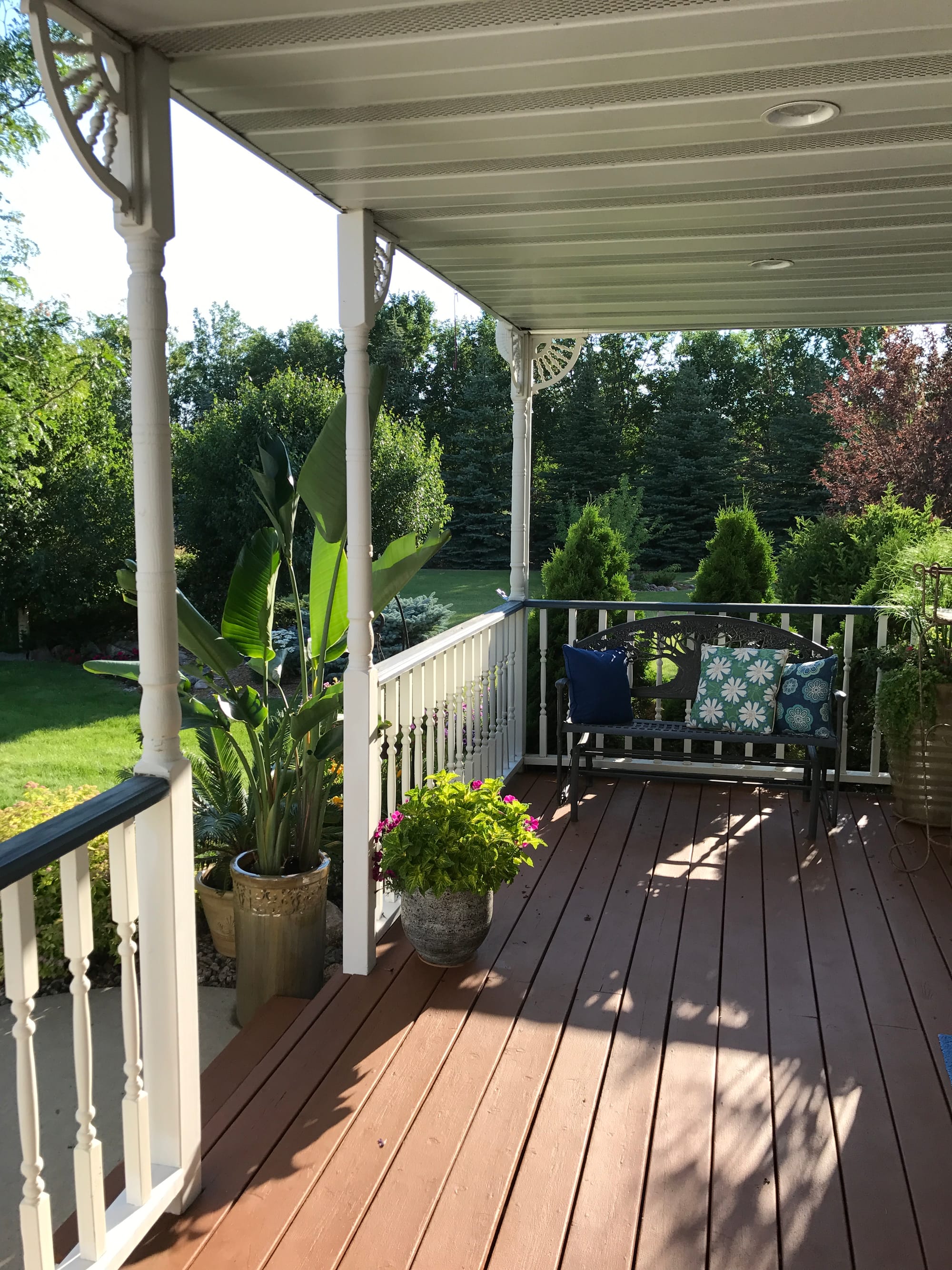
I find it fascinating how the Holmstrup Arborvitae can spring back after being clobbered by heavy snow. In just a matter of two weeks, they went from nearly lying on the ground back to upright. They are capable of this due to reaction wood, a specialized type of vascular cambium tissue that helps the tree to recover from heavy loads.
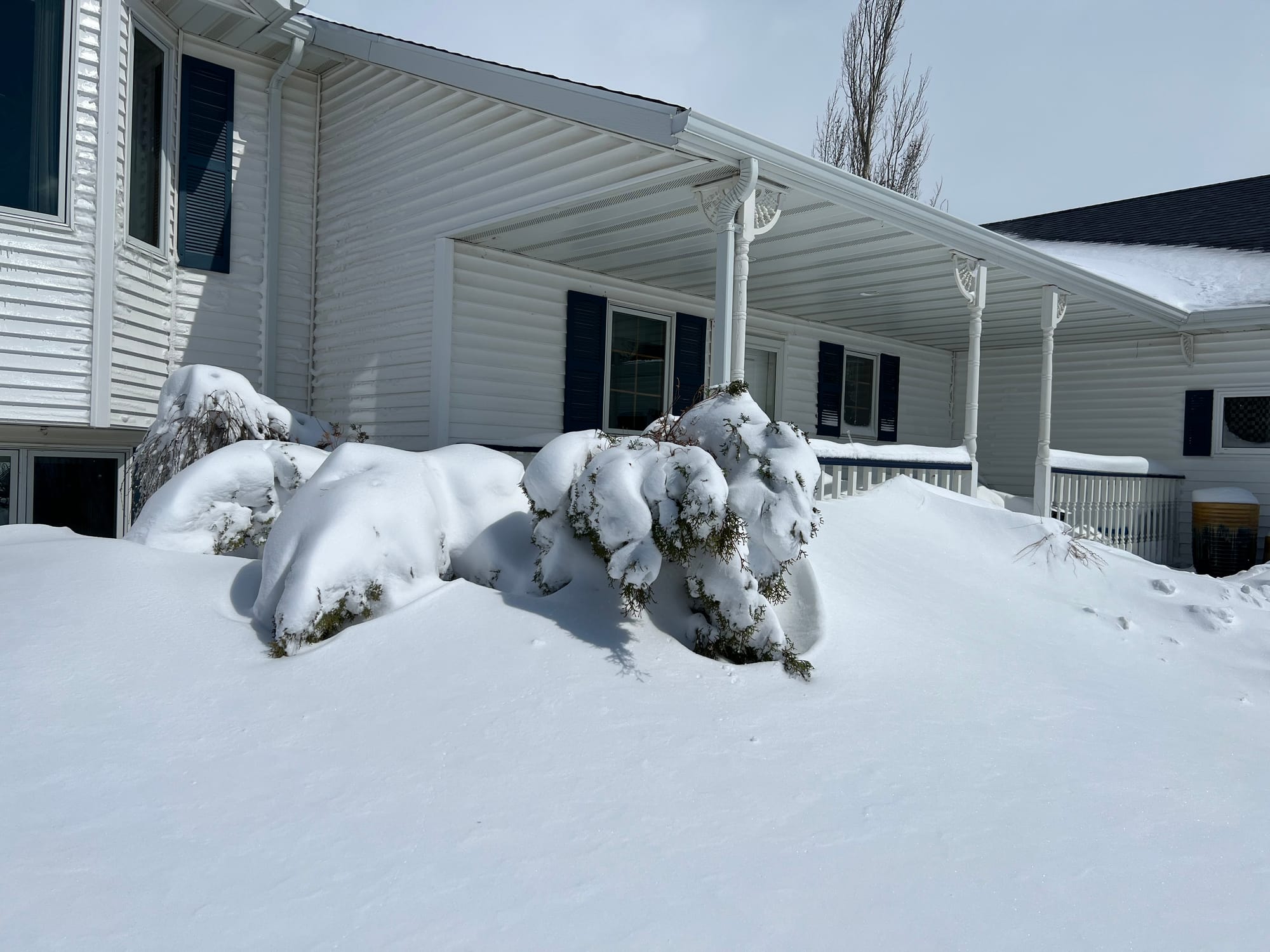
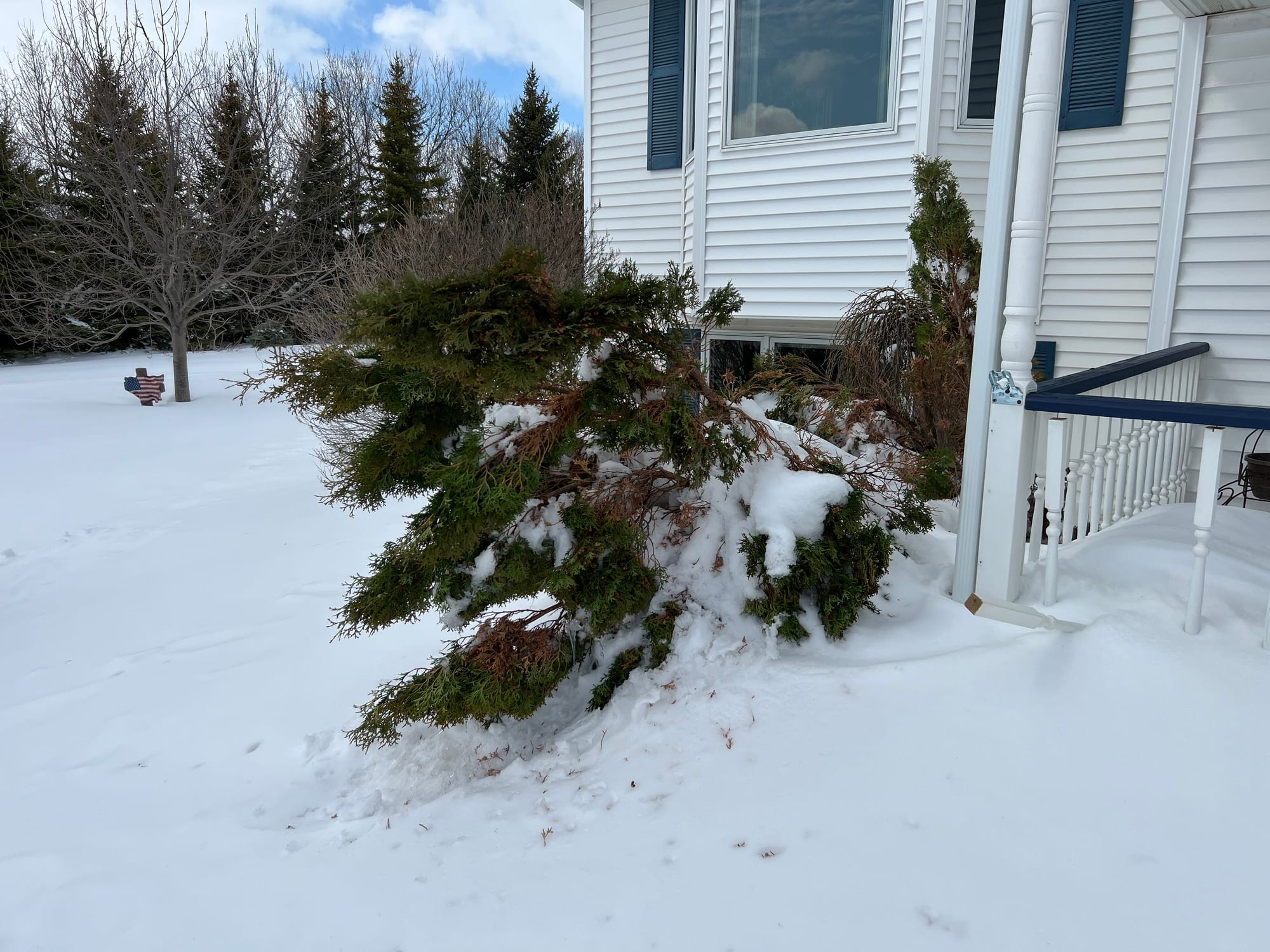
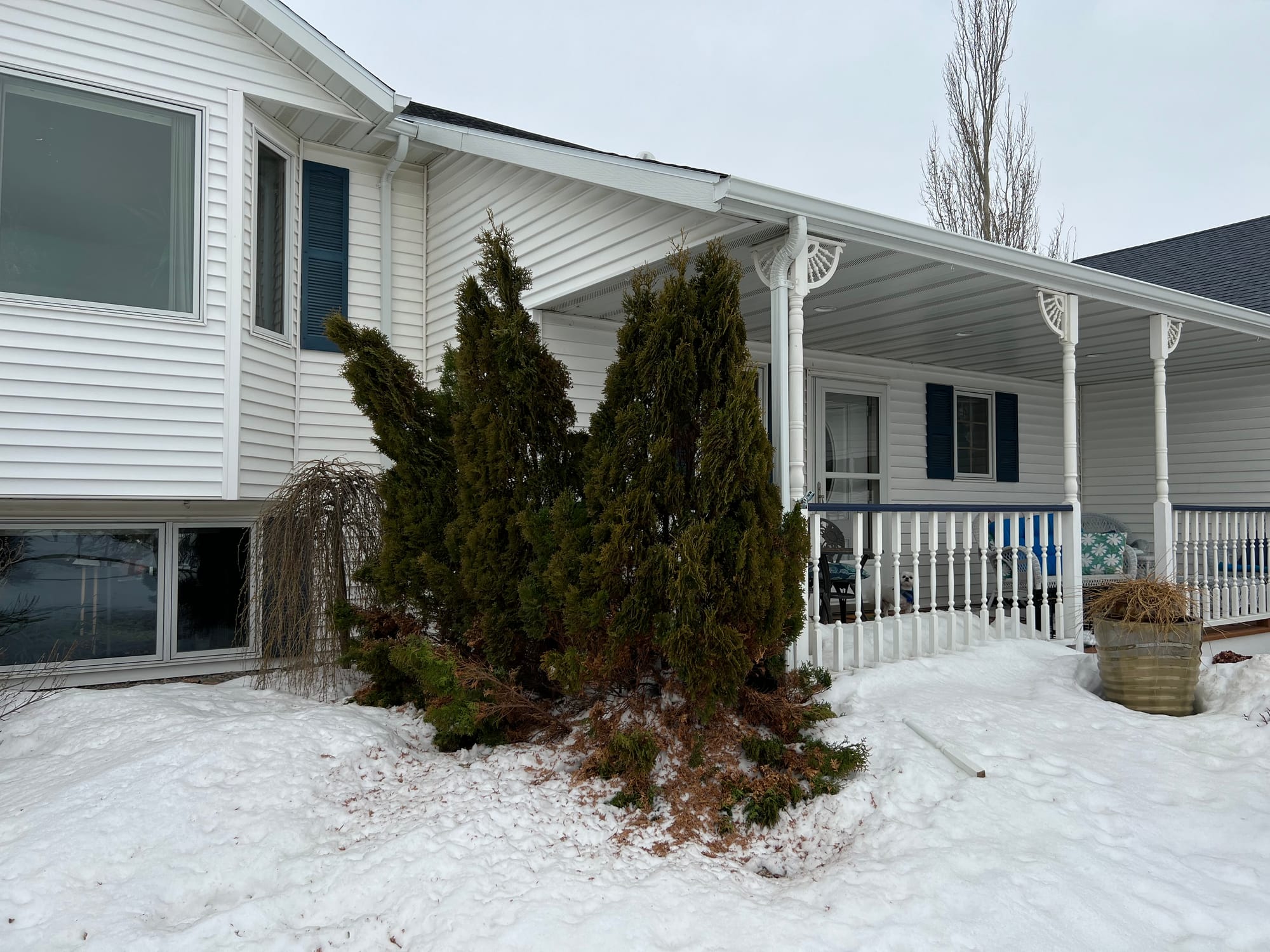
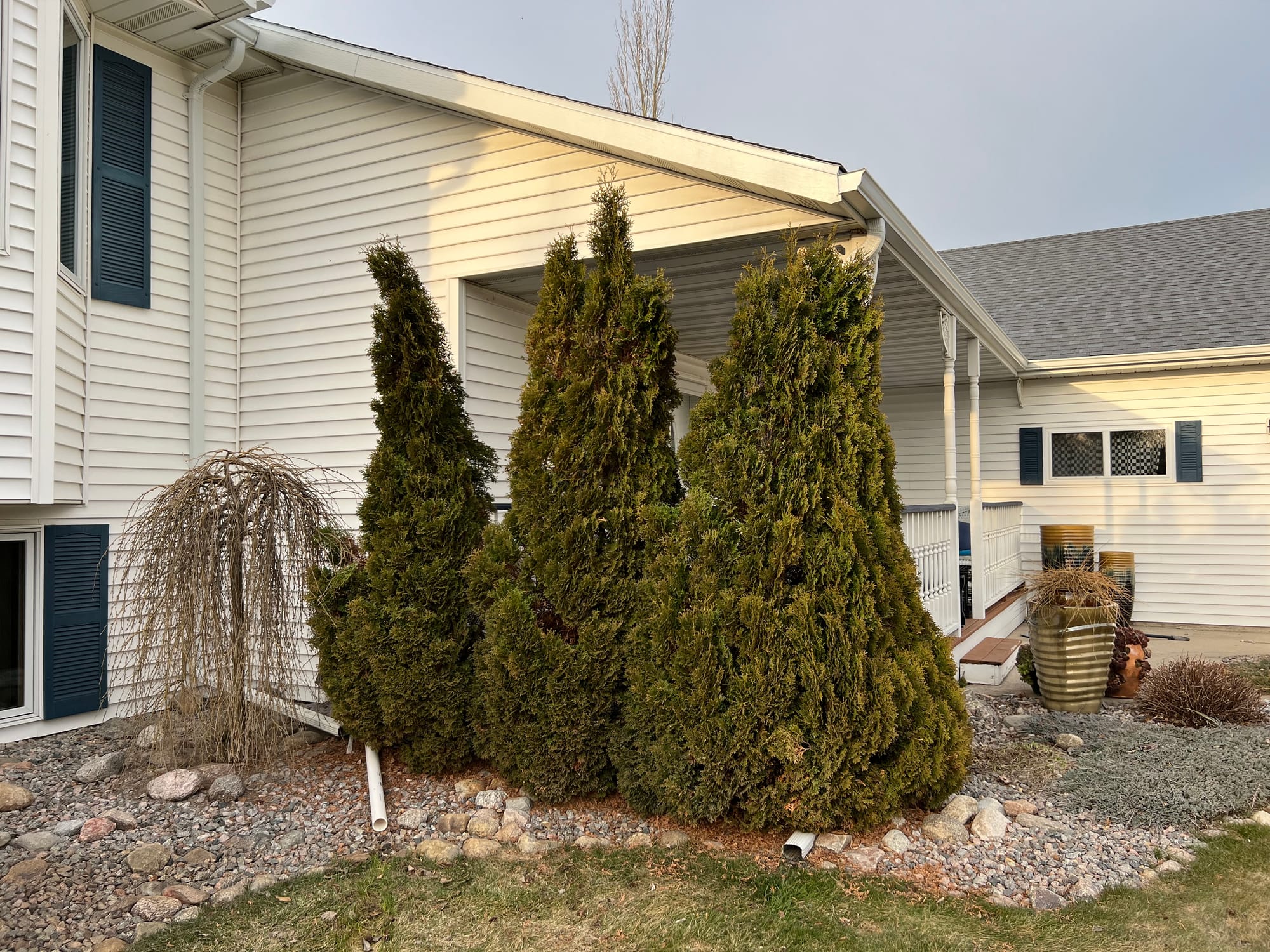
Reaction Wood On Holmstrup Arborvitae
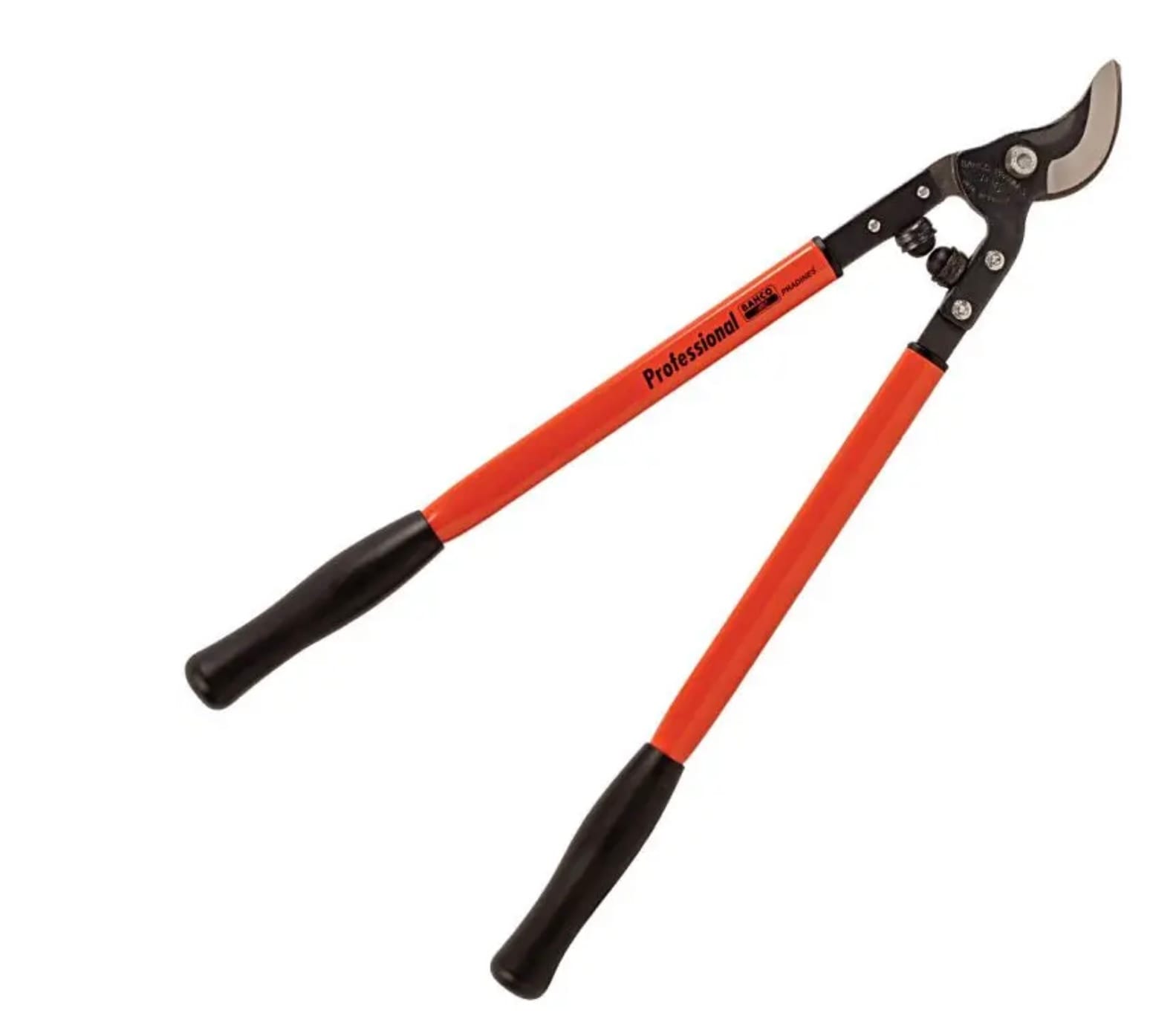
Bahco Loppers 1-1/4IN Cutting Capacity
Lightweight, well balanced and versatile
It is always better to leave an Arborvitae compromised by heavy snow or ice alone. Trying to help it out is more likely to crack branches. Wait until the snow melts. Then, if necessary, you can assist the plant with some string or rope where it does not fully “react” back.
Two of my earlier YouTube videos can be watched here and here, where I examine many varieties of Arborvitaes and how they handle snow loads in our area.
If you are interested in additional information on pruning Arborvitaes, I posted another video on YouTube pruning a Techny Arborvitae.
Keep an eye out for spider mites, this plant's most common summer insect pest.
Thanks for stopping by Garden Hike!
Kevin
A.M. Leonard has an excellent selection of tools and gardening supplies! Enter discount code GARDENHIKE10 when checking out to receive 10% off any order. Click the banner below to enter their online store.

Garden Hike is supported by its audience. When you purchase through links on this site, we may earn a small commission at no additional charge to you.
